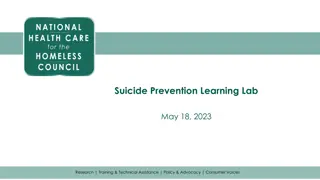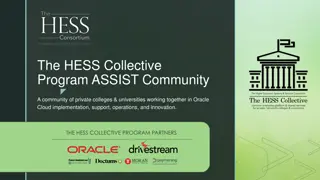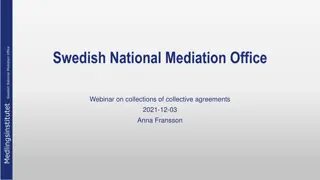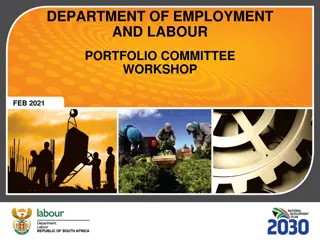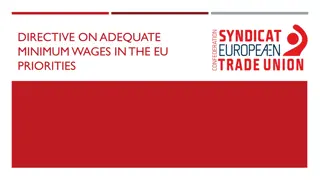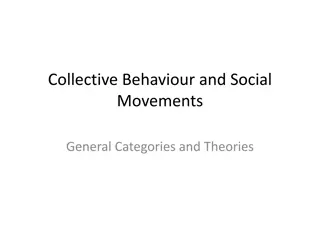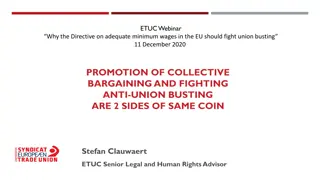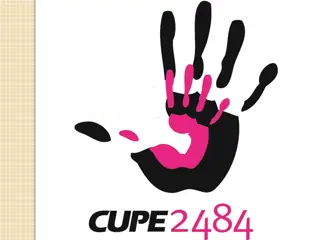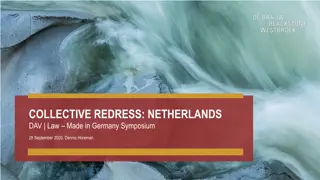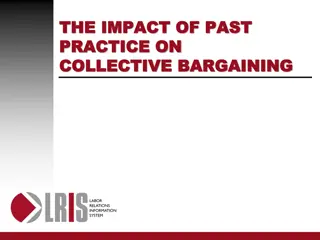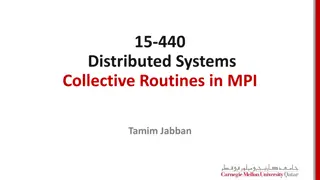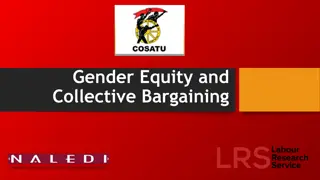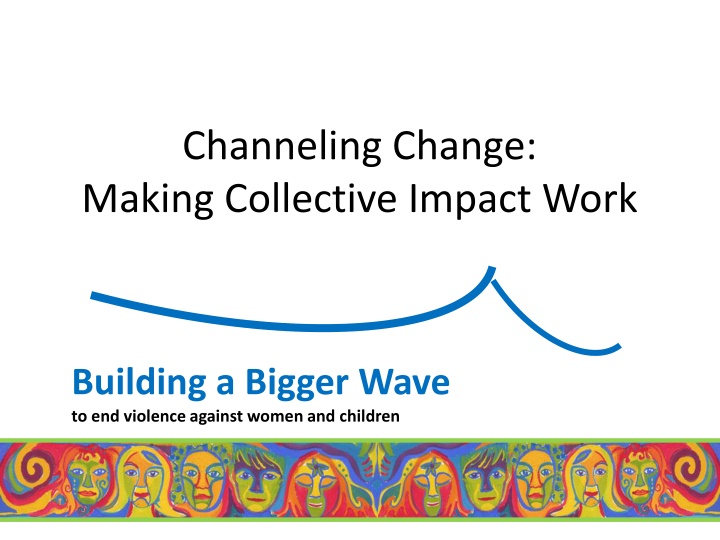
Building Collective Impact for Ending Violence Against Women and Children
Learn the importance of collective impact in addressing urgent social issues like violence against women and children. Discover the preconditions and conditions for successful collective impact efforts, as well as the difference between isolated impact and collective impact strategies. Find out how to create a shared vision for change, establish a common agenda, implement shared measurement practices, engage in mutually reinforcing activities, and ensure continuous communication to build a bigger wave of impact.
Download Presentation

Please find below an Image/Link to download the presentation.
The content on the website is provided AS IS for your information and personal use only. It may not be sold, licensed, or shared on other websites without obtaining consent from the author. If you encounter any issues during the download, it is possible that the publisher has removed the file from their server.
You are allowed to download the files provided on this website for personal or commercial use, subject to the condition that they are used lawfully. All files are the property of their respective owners.
The content on the website is provided AS IS for your information and personal use only. It may not be sold, licensed, or shared on other websites without obtaining consent from the author.
E N D
Presentation Transcript
Channeling Change: Making Collective Impact Work Building a Bigger Wave to end violence against women and children
Why Collective Impact? We want the impact of our individual efforts to add up to large social change. We want to end violence against women and children. To achieve the goal, we must come together and learn how to achieve collective impact
Stanford Social Innovation Review There is no other way society will achieve large-scale progress against urgent and complex problems, unless a collective impact approach becomes the accepted way of doing business.
3 Preconditions for CI 1. Influential champion*** 2. Adequate financial resources 3. Urgency for change
Isolated Impact vs. Collective Impact Isolated Impact Collective Impact Funders select individual grantees that offer the most promising solutions Funders and implementers understand solutions arise from the interaction of many organizations within a larger system NFP work separately and compete to produce the greatest independent impact Progress depends on working toward the same goal and measuring the same things Evaluation attempts to isolate a particular organization s impact Large scale impact depends on increasing cross-sector alignment and learning among organizations Large scale change is assumed to depend on scaling a singe organization Corporate and government sectors are essential partners Corporate and government sectors are often disconnected from the efforts of foundations and nonprofits Organizations actively coordinate their action and share lessons learned
5 Conditions of Collective Impact All participants have a shared vision for change violence prevention Common Agenda New Imperative for provincial Consistent across all participants to ensure alignment and accountability Shared Measurement Differentiated and coordinated through mutually reinforcing action Mutually Reinforcing Activities Continuous Communication Consistent and open across the many players to build trust, assure mutual objectives create common motivation survey, newsletter Building a Bigger Wave communication tools website, Creating and managing collective impact requires a separate organization with staff and skills Backbone Support Building a Bigger Wave provincial network of VAWCCs
Phases of Collective Impact Phases of Collective Impact Components for Success Success Components for PHASE 1 Initiate Action Initiate Action PHASE 1 PHASE 2 Organize for Impact Organize for Impact PHASE 2 PHASE 3 Sustain action Sustain action PHASE 3 Governance and Governance and Infrastructure Infrastructure Identify champions and form cross- Identify champions and form cross- sector group sector group Create infrastructure (backbone and Create infrastructure (backbone and processes) processes) Facilitate and refine Facilitate and refine Strategic Planning Strategic Planning Map the landscape and use data to make case make case Map the landscape and use data to Create common agenda (goals and strategy) strategy) Create common agenda (goals and Support implementation Support implementation (alignment to strat) (alignment to goals and strategy ) Community Involvement Community Involvement Facilitate community outreach Facilitate community outreach Engage community and build public will Engage community and build public will Continuous engagement and conduct advocacy engagement and conduct advocacy Continuous Evaluation and Improvement Evaluation and Improvement Analyze baseline data to identify key issues and gaps data to identify key issues and gaps Establish share metrics Establish share metrics Collect, track and report progress / learn and improve report progress / learn and improve Analyze baseline Collect, track and
Working for Collective Impact One people many voices Government Leadership VAW Community Leadership Political commitment to collective impact Bureaucratic commitment across ministries and portfolios Build on existing initiatives and (Transforming our Communities, DV / SVAP etc.) Collaborative efforts already underway (BBW, interministerial committees , funder groups etc.) Commitment to collective impact across sectors and geographies Provincial strategy to align investments under collective impact (Map landscape) Building relationships and trust to develop strategy in partnership with community leaders Building relationships and trust, developing capacity to work productively with difference and conflict both within the VAW sector and with government leaders Ministries integrate efforts and develop infrastructure to flow information and innovation up, down and across OPS to better inform policy and decision making Building a Bigger Wave provincial network develops broad engagement and infrastructure to facilitate continuous communication Existing resources reviewed and aligned in dialogue with community leaders Process of developing strategy and aligning resources is communicated throughout the network with opportunity for local and regional input
Essential Intangibles Relationship and trust building among diverse stakeholders Leadership identification and development Creating of a culture of learning Positive approaches to conflict dealing with difference
Building a Bigger Wave to end violence against women and children Common agenda PROVINCIAL Common agenda REGIONAL Common agenda LOCAL ISSUES Common agenda LOCAL ISSUES Common agenda LOCAL ISSUES
Continuous Communication BBW Website with survey tool Newsletter Distribution list VAWCCs tapping into existing infrastructure
Building Relationships Meeting with senior bureaucrats and politicians to brief them on the BBW Network The Network provides the infrastructure that can make VAW expertise, experience and ideas more accessible There are many ways to support the Network and to tap into the wealth of resources in the VAW sector if people know about it!
Building Relationships Join us for the next two day BBW forum for VAWCCs Oct 29 & 30, 2015 in Toronto. Contact us: info@buildingabiggerwave.org for more information.


